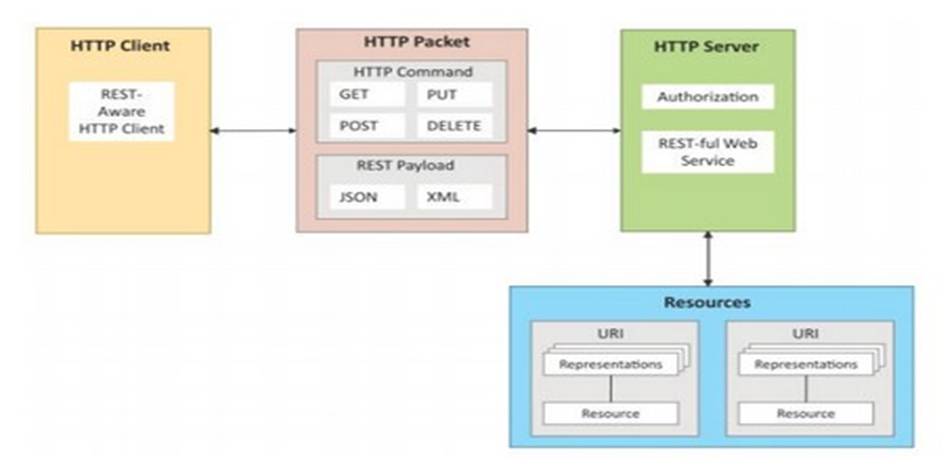REST Based Communication APIs –
REST का पूरा नाम Representational State Transfer है। यह architectural principles का एक समूह होता है जिसका प्रयोग web services और web APIs को create करने के लिए किया जाता है। REST जो है वह request-response कम्युनिकेशन मॉडल को follow करता है। इसके पास निम्नलिखित constraints होते हैं:-

Client-server – client server constraint के पीछे separation of concerns का सिद्धांत होता है। इसके द्वारा model को develop और update करना आसान हो जाता है। इसका अर्थ यह है कि client को server की जिम्मेदारियों की चिंता नहीं होती है जैसे कि – data का storage. और server को client की जिम्मेदारियों की चिंता नहीं होती है जैसे कि – user interface.
Stateless – client के द्वारा server को की जाने वाली प्रत्येक request के द्वारा जरुरी information को अवश्य contain करना चाहिए जिससे कि request को समझा जा सके।
Cache-able – caching जो है वह IoT को और ज्यादा scalable और efficient बना देती है। cache का प्रयोग करके data को दुबारा से use किया जा सकता है।
Layered system – इस constraints के द्वारा system की scalability बेहतर होती है।
Uniform interface – यह client और server के बीच uniform communication को सुनिश्चित करता है।
Code on demand – यह एक optional (वैकल्पिक) constraint होता है। यह सुनिश्चित करता है कि server के द्वारा प्रदान किये गये code या script को execute किया जा सकता है।
REST Based Communication APIs –
The full name of REST is Representational State Transfer. It is a set of architectural principles that are used to create web services and web APIs. REST follows the request-response communication model. It has the following constraints:-

Client-server – The principle behind client server constraint is separation of concerns. Through this it becomes easier to develop and update the model. This means that the client does not have to worry about the responsibilities of the server such as storage of data. And the server does not worry about the responsibilities of the client such as – user interface.
Stateless – Every request made by the client to the server must contain the necessary information so that the request can be understood.
Cache-able – Caching makes IoT more scalable and efficient. Data can be reused by using cache.
Layered system – Through these constraints the scalability of the system is improved.
Uniform interface – It ensures uniform communication between the client and server.
Code on demand – This is an optional constraint. This ensures that the code or script provided by the server can be executed.